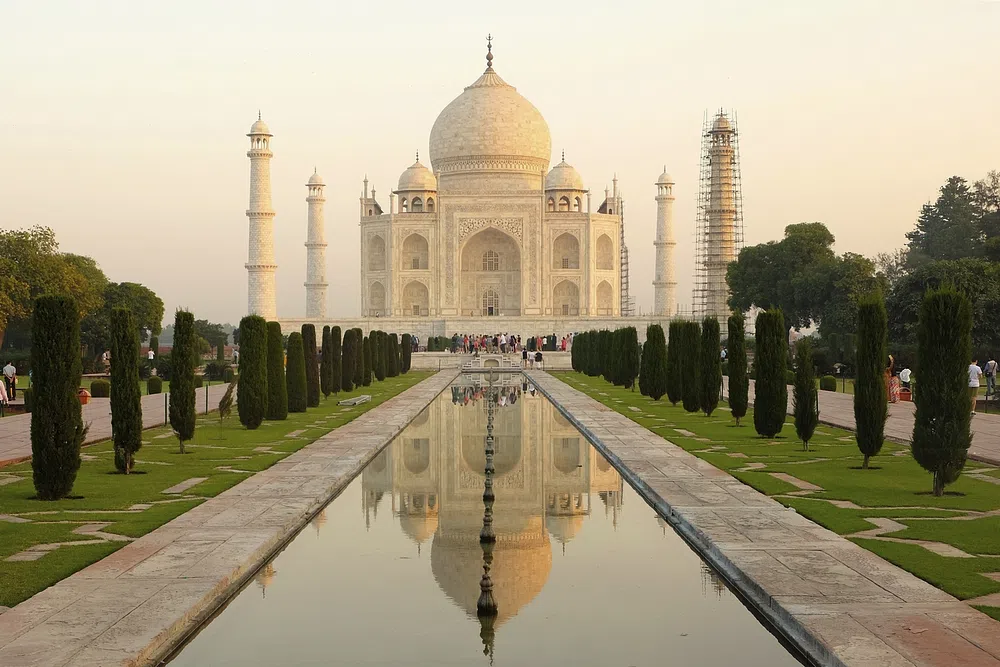The Taj Mahal, located in Agra, India, is one of the most iconic and renowned architectural marvels in the world. This magnificent white marble mausoleum is celebrated for its breathtaking beauty, historical significance, and exceptional craftsmanship. Here are some key aspects of the Taj Mahal:
- Architectural Beauty: The Taj Mahal was built by the Mughal Emperor Shah Jahan in memory of his favorite wife, Mumtaz Mahal, who died during childbirth. Its architectural design is a harmonious blend of Persian, Islamic, and Indian styles, making it a striking example of Mughal architecture. The central white marble dome, flanked by four smaller domes and surrounded by intricately designed minarets, is a sight to behold.
- Symbol of Love: The Taj Mahal is often described as a symbol of eternal love. It stands as a testament to the deep love Shah Jahan had for Mumtaz Mahal. The story of its construction is a poignant tale of love, loss, and remembrance.
- Intricate Inlay Work: The monument is adorned with exquisite floral and geometric designs created through the art of Pietra Dura, an inlay technique using semiprecious stones such as lapis lazuli, jasper, and mother-of-pearl. This inlay work covers the white marble surface with intricate patterns, adding to its grandeur.
- Garden Complex: The Taj Mahal is surrounded by beautifully landscaped gardens with a reflective pool in front, enhancing its aesthetic appeal. The meticulous symmetry of the layout adds to its charm and reflects the influence of Islamic garden design.
- World Heritage Site: In 1983, the Taj Mahal was designated as a UNESCO World Heritage Site due to its cultural and historical significance. It draws millions of tourists from around the world every year, making it one of the most visited landmarks on the planet.
- Conservation and Preservation: Over the years, the Taj Mahal has faced environmental threats and degradation due to air pollution and discolouration caused by vehicle emissions. Efforts have been made to mitigate these issues, including restrictions on industrial activity and vehicle movement in the vicinity to protect this architectural wonder.
- Cultural Significance: The Taj Mahal is not just a beautiful structure; it represents India’s rich history and the cultural impact of the Mughal Empire. Its enduring allure has been the subject of literature, art, and even featured in numerous films and documentaries.
The Taj Mahal continues to be an enduring symbol of beauty, love, and architectural excellence. It serves as a reminder of the rich cultural heritage of India and is a testament to the enduring power of love and creativity.


